Unlock the immense potential of RPA
Accelerate Healthcare operations with RPA Services
Leverage RPA Services to seamlessly automate tasks, boost caregivers' productivity and deliver exceptional patient/ resident experiences.
What is Robotic Process Automation (RPA)?
Robotic process automation (RPA) is a technology that allows providers to automate repetitive, rule-based tasks that are typically performed by humans. In the healthcare industry, RPA services can be used to automate a wide range of tasks, such as scheduling appointments, processing insurance claims, and managing electronic health records. RPA in healthcare organizations can benefit from this method by improving efficiency, reducing errors, and freeing up staff time to focus on more important tasks.
Optimizing LTPACs and CCRCs Across Functions through a Comprehensive Process Mapping
Interesting RPA use cases for LTPAC and CCRC
As AI & Automation Advisors and RPA Implementation Partners, we make sure that automation works as a bridge through the maze of software, breaks the siloes, and reduces repetitions by creating automation augmented workforce.
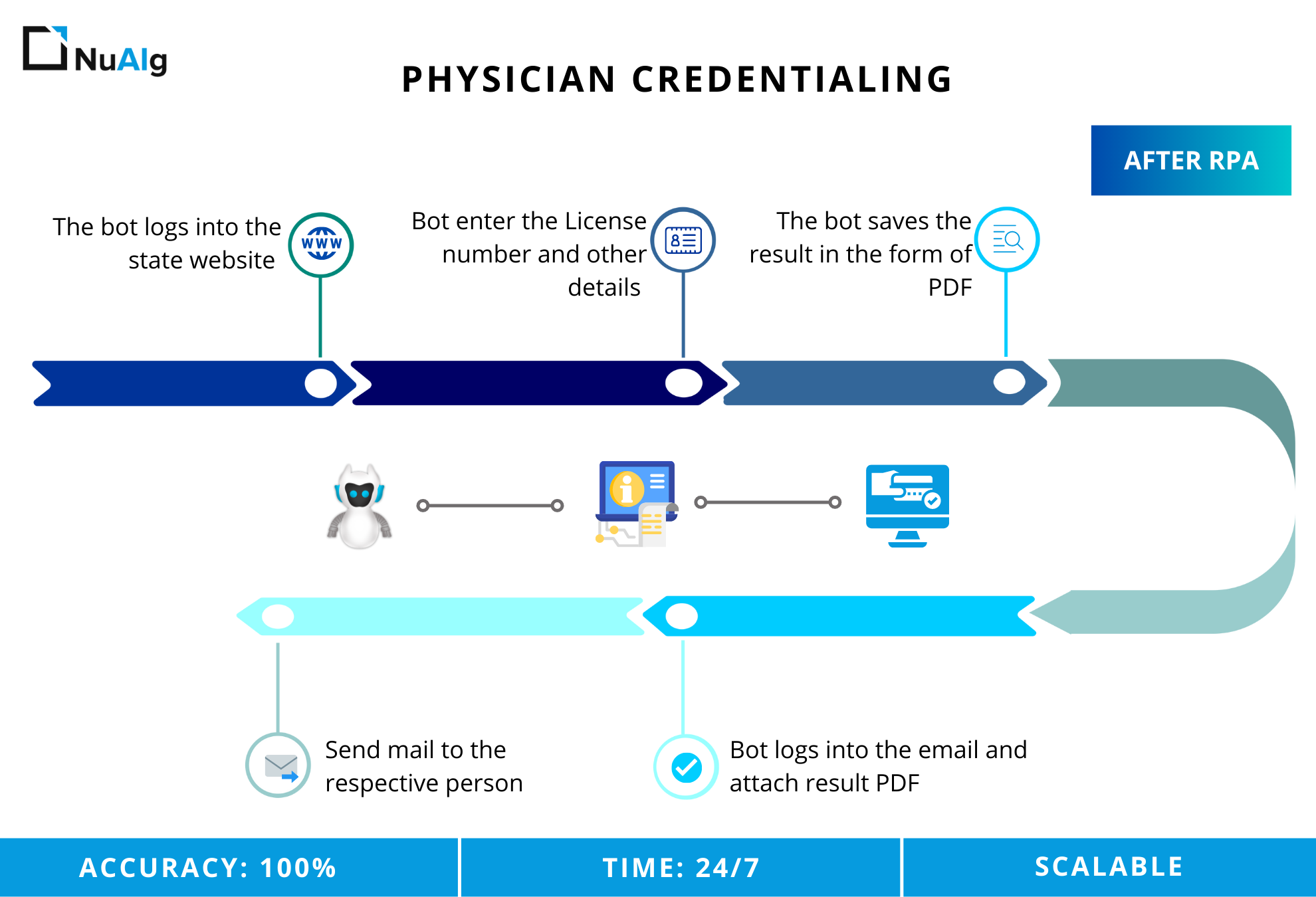
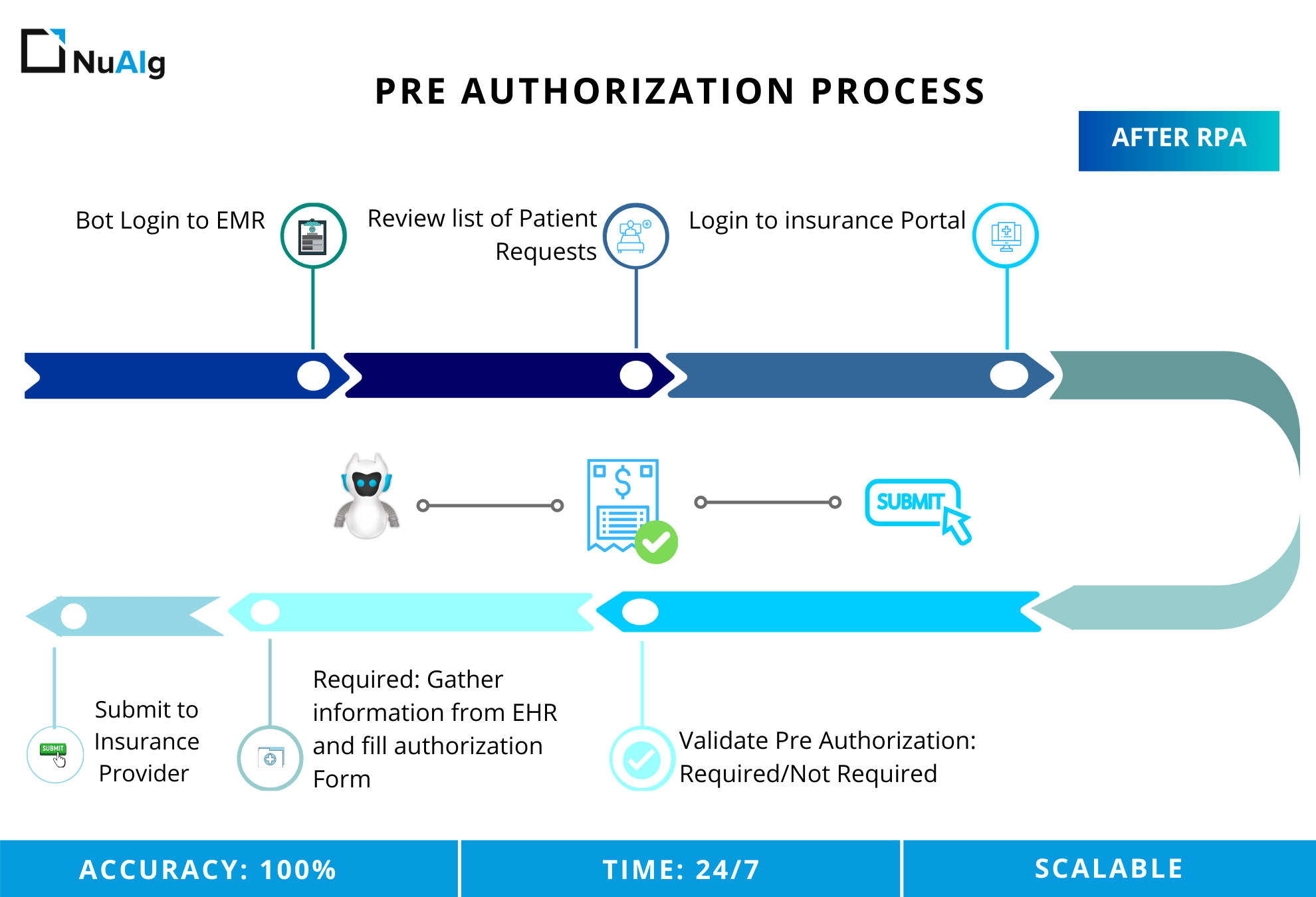
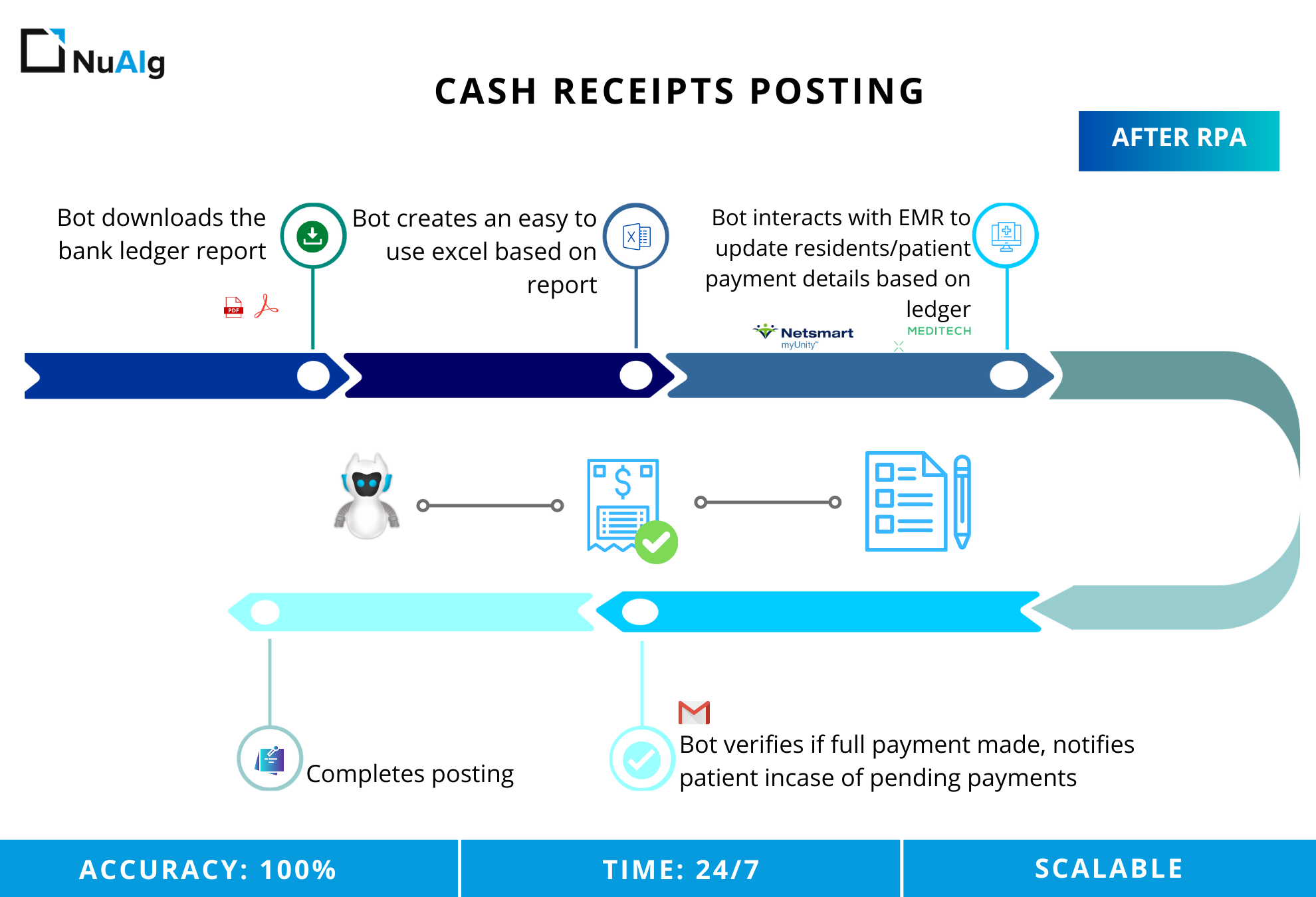
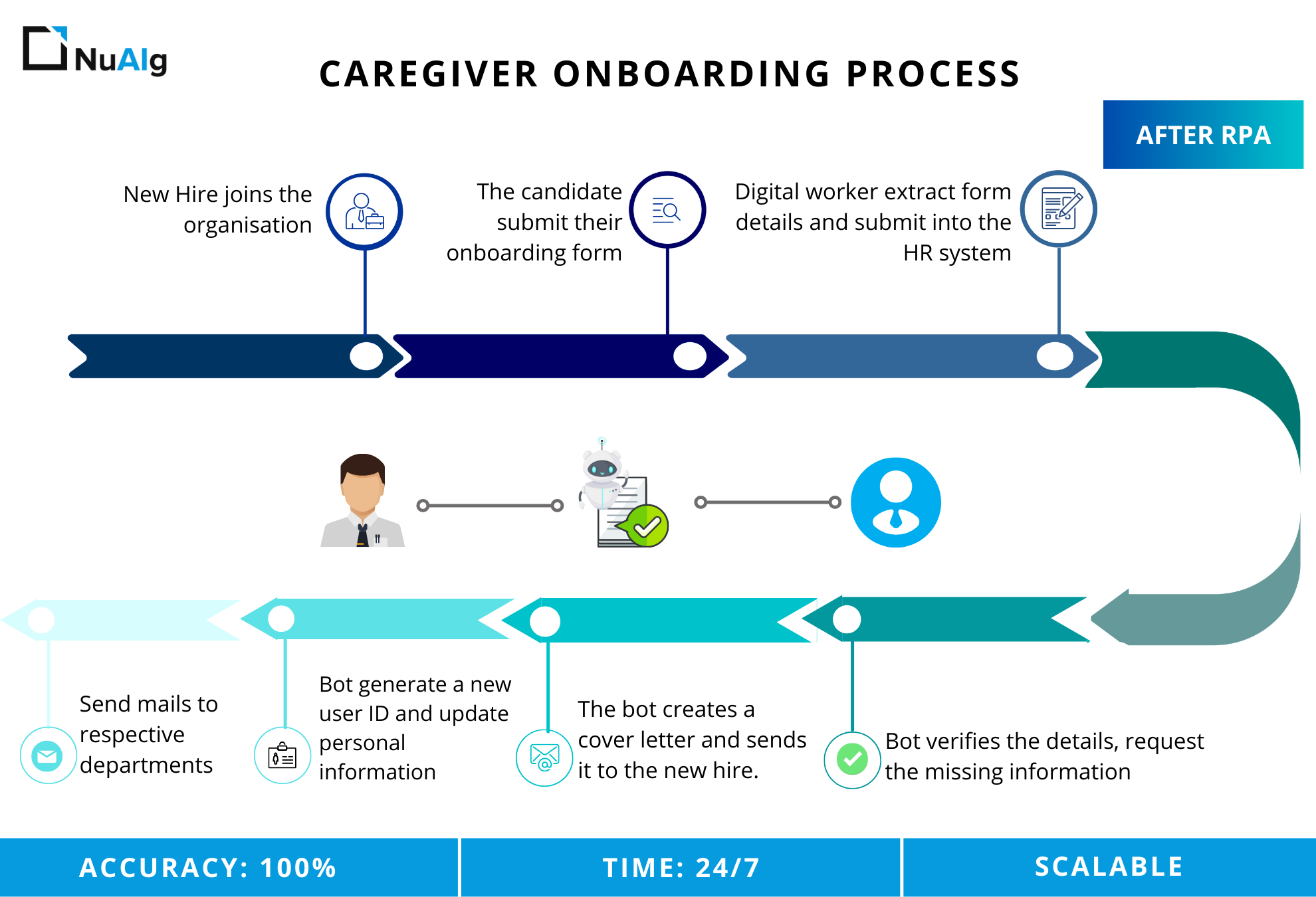
Robotic Automation Process Assessment & Advisory Services
Senior living providers need robotic process automation to accelerate digital transformation. Determining which processes should be automated in an organization is a critical step. NuAIg works as an RPA consulting company and has proven capability in designing and maintaining bespoke Robotic Process Automation solutions.
As part of our RPA solutions, we assist providers to define, discover, recommend the right processes for automation, and build a Proof of Value (PoV) that can establish the fit of RPA that results in a near zero-touch process with improved efficiency and amplified business value.

RPA services use cases Across LOBs
RPA services can be used to enter financial data into accounting software and other applications automatically. This can speed up the process and improve the accuracy and reliability of financial data while reducing time and effort.
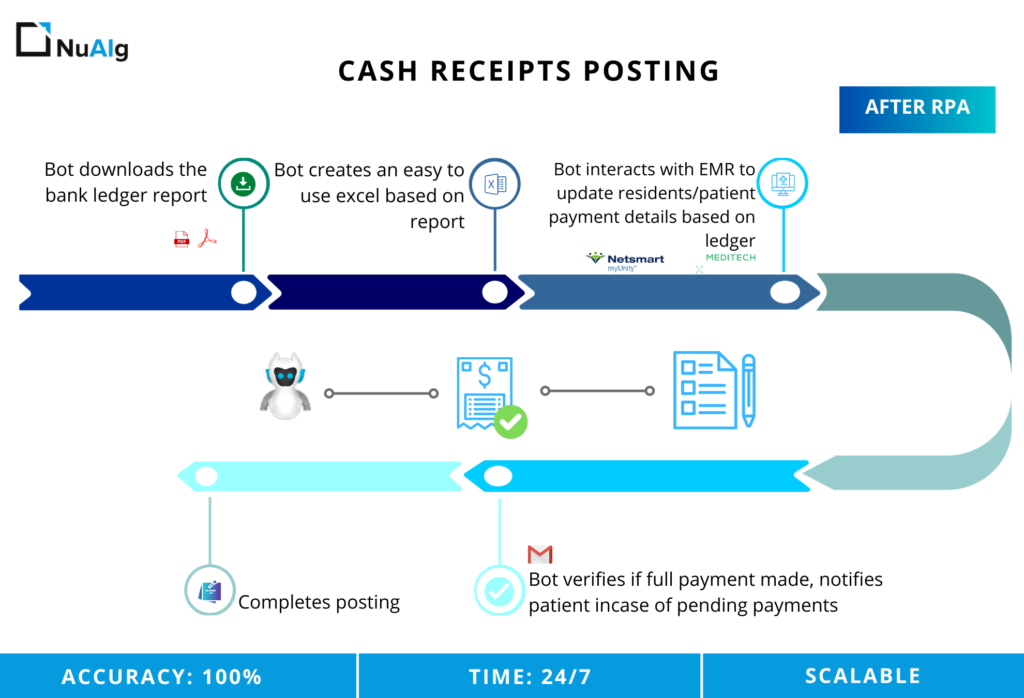
Providers can streamline HR transactional tasks by implementing RPA to free up time and resources for HRs for more productive and strategic actions such as giving face-to-face time to employees or resolving issues. RPA is mainly focused on micro tasks, integrating activities that big legacy systems are not able to do.
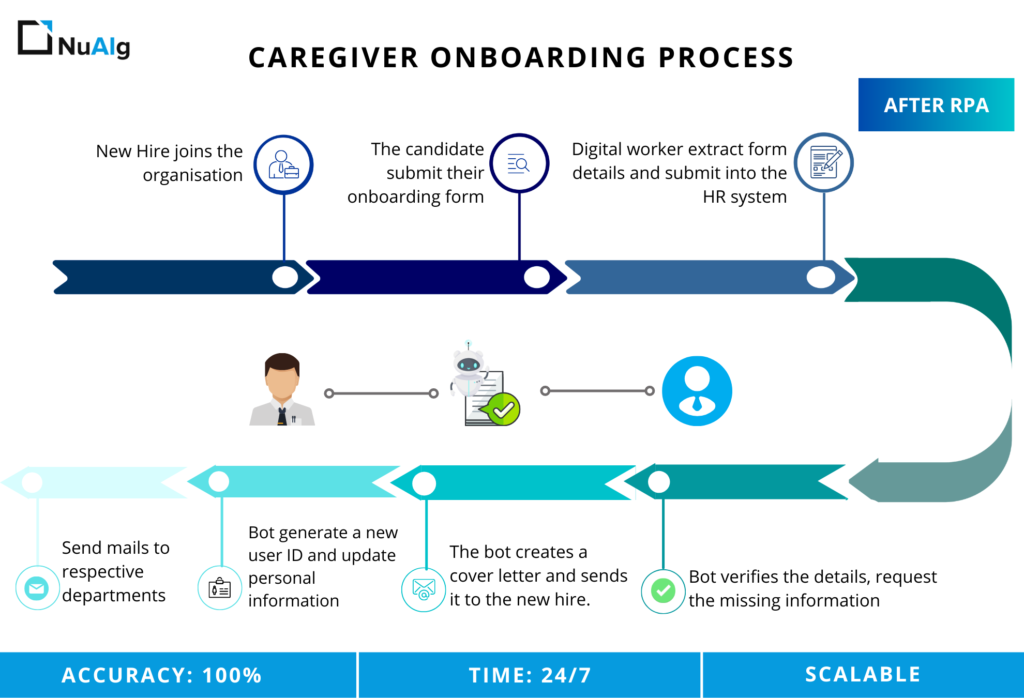
Employee attendance and leave management systems are tediously tracked during payroll processing. The process can be challenging, especially if there are different employee hierarchies and contractual agreements. In certain cases, employees get a raise in salary or move to a new location. In such cases, RPA can incorporate these intermittent changes into payroll records automatically.
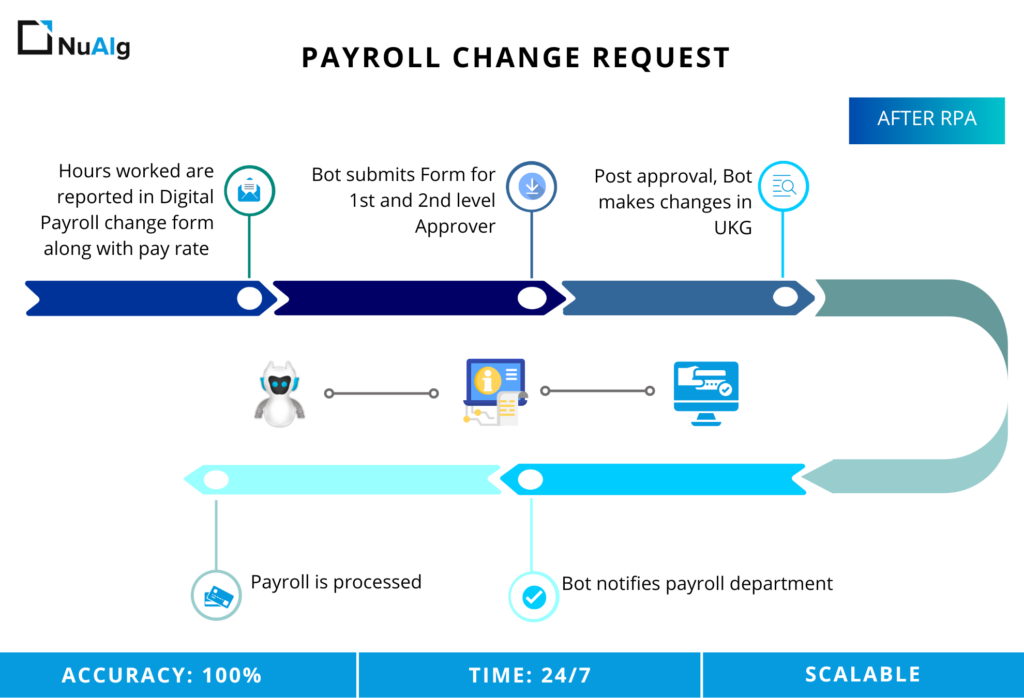
Revenue cycle automation is crucial to handle the complexity of tasks, ranging from patient eligibility determinations to denial management. Providers can take several key steps to ensure their RCM automation is durable and effective.
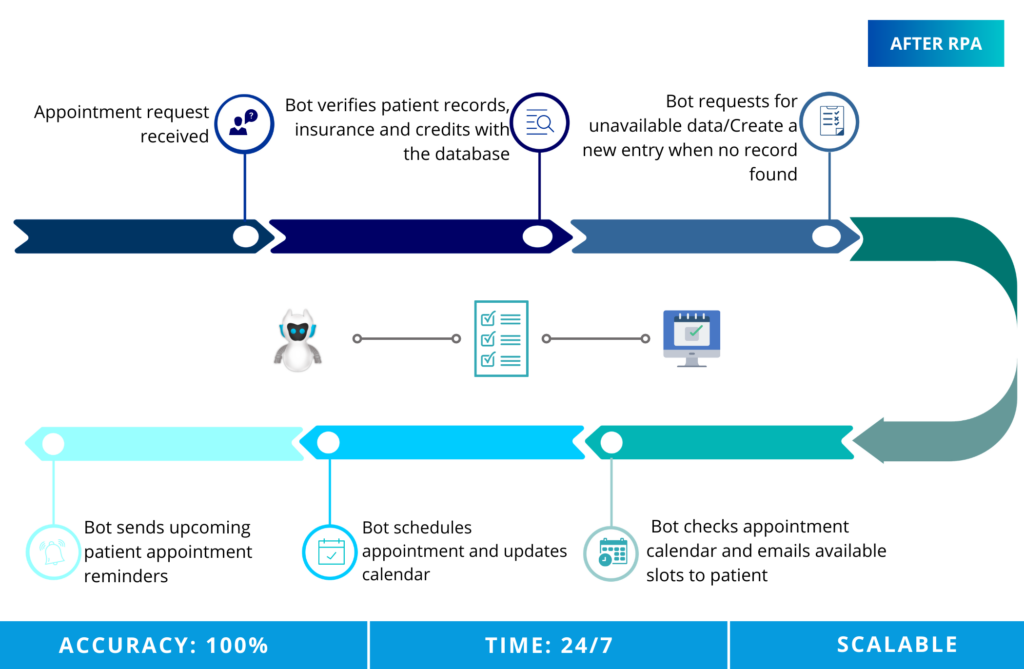
Home health care teams today are burdened with disparate systems and massive administrative burdens every day. AI and RPA-powered intelligent automation for home health teams can eliminate the administrative burden, tedious repetitive tasks like Physician Order Tracking, Visit Notes QA and RCD Automations allowing teams to operate on top of their licenses.
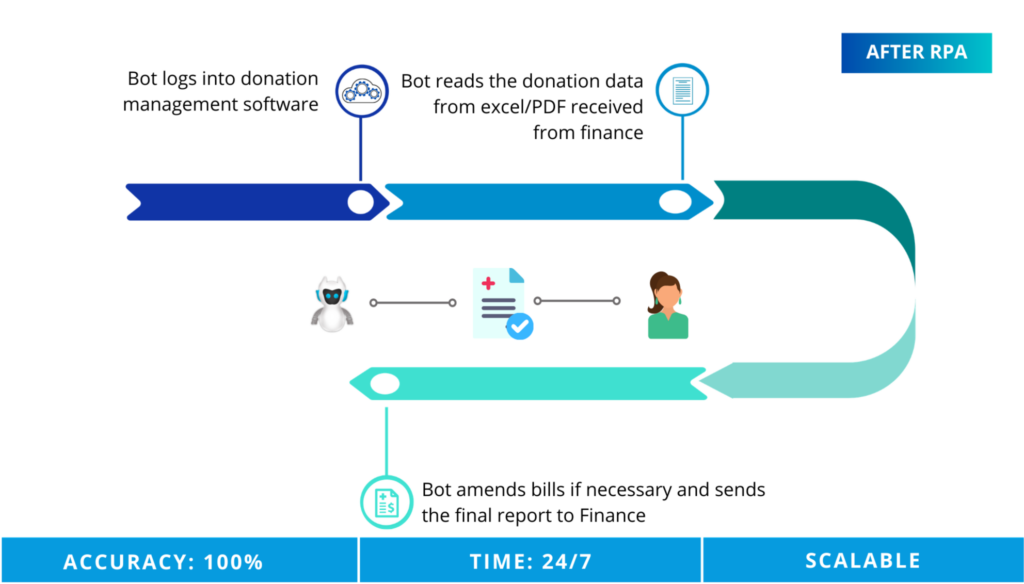
The NuAIg Difference
Integrate Nuaig expertise in artificial intelligence, machine learning, and knowledge-based systems
Latest RPA Case Studies
Maximizing Efficiency and Reducing Costs with RPA in Healthcare: Real-World Examples
Frequently Asked Questions about RPA Services
1. What are the benefits of using RPA services?
Robotic process automation (RPA) can bring a number of benefits to organizations that adopt it. Some of the main benefits of using RPA services include:
- Reduced errors
- Improved efficiency
- Cost savings
- Improved customer service
- Increased accuracy
- Greater scalability
2. How does RPA work?
RPA is the process that uses software robots or bots to automate repetitive human-based manual tasks within the automation systems. Leveraging Robotic process automation improves operational efficiency, reduces errors, and enhances compliance by eliminating human errors.
3. What are some common applications of RPA Services?
- Data entry and management: RPA can be used to extract, validate, and enter data from various sources, such as electronic health records (EHRs) and insurance claims, into a single database. This can reduce the risk of errors and improve the accuracy of data, as well as reduce the time and resources required for manual data entry.
- Claims processing: RPA can be used to automatically review and process insurance claims, including verifying the accuracy of the claim, checking for any discrepancies, and approving or denying the claim based on predetermined rules.
- Patient scheduling and appointment management: RPA can be used to automate the scheduling and rescheduling of patient appointments, as well as the generation of reminders for upcoming appointments.
- Medical billing: RPA can be used to automate the process of generating and sending medical bills to patients or insurance companies, as well as tracking payments and following up on unpaid bills.
- Clinical trials: RPA can be used to automate the collection, analysis, and reporting of data from clinical trials, which can help speed up the research process and improve the accuracy of results.
4. Can RPA services be integrated with other software systems?
Yes, RPA software can be integrated with other healthcare software systems, such as electronic health record (EHR) systems, practice management systems, and billing and claims processing systems.
Integrating RPA with these systems allows the software robots to access and manipulate data, as well as trigger certain actions based on the data. For example, an RPA robot could be used to extract patient data from an EHR system, validate the data for accuracy, and then enter it into a billing system to generate and send a medical bill to the patient.
Integrating RPA with other healthcare software systems can help streamline processes and improve efficiency by automating repetitive tasks by reducing the time and resources required for these tasks.
However, it’s important to note that RPA integration can be complex and requires careful planning and execution to ensure that it is done properly and in a way that is compliant with relevant regulations and standards.
5. How can businesses get started with RPA Services?
The healthcare sector is ripe for automation. It can be used to streamline processes and reduce costs across a number of health sector applications, from data entry for patients to insurance claims processing. Investing in the right tools and partners can make RPA an extremely powerful tool for transforming healthcare.
Questions?
Still Have Questions About RPA Service Implementation? Contact Our Consultants for More Information
About Us
NuAIg is an AI and Automation Implementation Advisory service provider helping aging service providers to improve efficiencies.
Speak with our analyst
Corporate Office
US – EDISON
- 515 Plainfield Avenue, Suite 2, Edison NJ 08817
- +1 732 328 8205
- [email protected]








